The monument to the Irish
You can see the Brixton tower from almost anywhere in Johannesburg. It was completed in 1962 and, back then, was called the Albert Hertzog tower after the apartheid minister of posts and telegraphs (he who called television the “devil’s own box for disseminating communism and immorality”).
Thirteen years later, on November 1 1975, Betsie Verwoerd unveiled the Irish Volunteer Monument at the base of the tower.
The unlikely pair – the slender Brixton Tower and the stumpy, abstract memorial – stood as odd partners in the celebration of Afrikaner nationalism.
Jan van Wijk, architect of the Taal Monument in Paarl, designed the monument. It was erected by the Irish Brigade Memorial Fund “in remembrance of the [300] Irish who fought for the Boer nation in its hour of need [between] 1899-1902” as the inscriptions in English and Afrikaans read. The site is now empty, except for a sunken 20m paved area in the centre of which the memorial once stood – a grouping of four concrete cylinders, their ends truncated at contrasting angles.
The monument was dismantled in 2002 and driven to Orania in the Northern Cape by a group of Afrikaners concerned by its imminent demolition.
Three of its cylinders represent the Irish battalions that fought in the South African War, and the fourth – and tallest one, at 3.5m – represents the rising of the Afrikaner nation.
Land ownership
An article in Business Day in November 2000 reported that in 1995 a businessman named Victor Scott bought the 990m2 piece of land where the monument stood. He bought it from the Irish Brigade Memorial Fund whose duty it was to maintain the monument. The fund, now defunct and with its last chairperson, Dirk van Tonder, dead, acquired the land in the 1970s, in a swap with the SABC for a piece of land in Cottesloe, next to Brixton.
The South African Heritage Resources Agency became aware of the sale of the land to Scott in 2000. The agency said the monument was not “declared” but was still protected by the National Heritage Resources Act, which outlaws the moving and destruction of monuments.
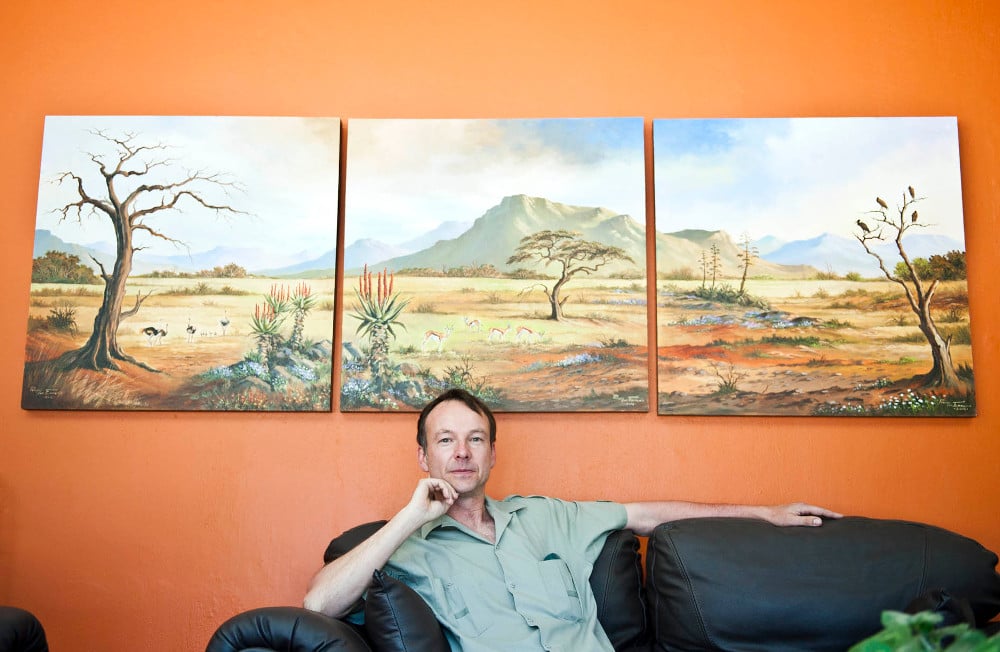
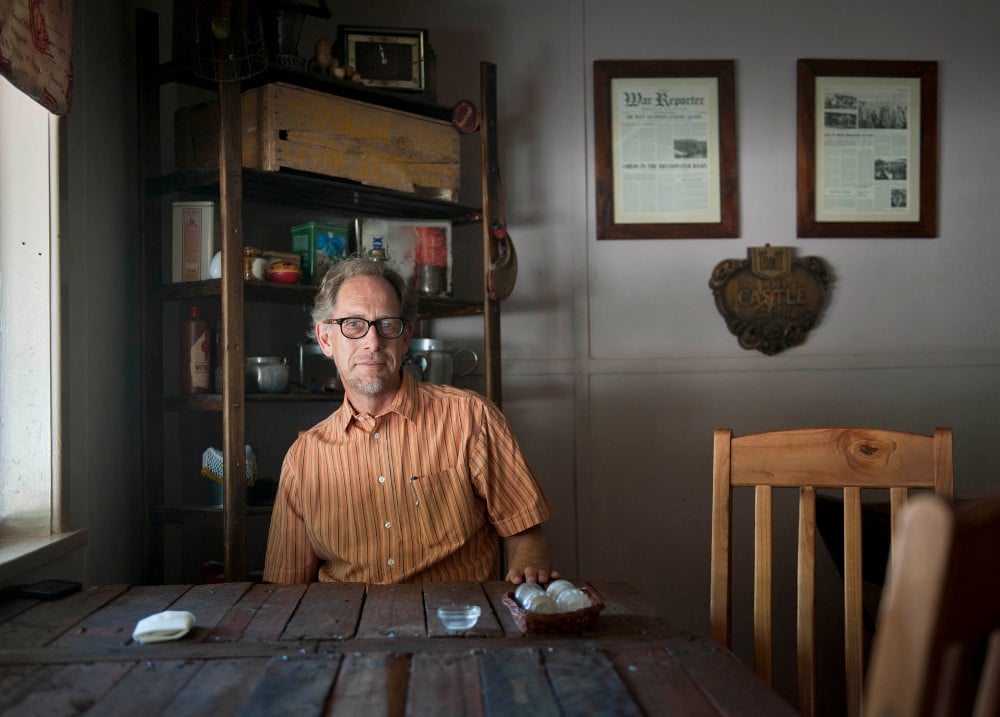
Sebastiaan Biehl (top) worked with Carel Boshoff IV to move the Irish Volunteer Monument to Orania. (Photos: Madelene Cronjé, M&G)
There was a zoning dispute, with Scott claiming the land had been zoned for commercial use, whereas the Northern Metropolitan Council’s records showed that the property had been zoned as public space.
According to the Business Day article, the town planning department had never received an application to rezone the land. “It’s not clear how the fund was able to sell the land without attracting the attention of the National Monuments Council,” wrote Gill Moodie.
In 2002, German immigrant Sebastiaan Biehl, a political science student at the Rand Afrikaans University (now the University of Johannesburg), caught wind of the developer’s intention to demolish the monument. As a self-identifying Afrikaner, he thought the monument would be right at home in Orania.
‘Good idea’
“I read in the Rapport newspaper about the monument; that it was neglected and [had] deteriorated and so on,” Biehl told the Mail & Guardian recently. “I also visited the monument. I found it an interesting monument, with comparisons to the Afrikaans language monument in Paarl. I thought it would be a good idea to move it to Orania, a place where it would be preserved. I think the person [who bought the land] wanted to erect a commercial building. He said we would be doing him a favour actually, if we moved the monument.”
Biehl, now a researcher and tour guide in Orania, contacted Orania Beweging leader Carel Boshoff IV, the son of Orania’s founder, and Freedom Front Plus president Pieter Mulder, who raised the R20 000 to have it moved.
“The site [in Brixton] was never declared as a heritage site,” said Mulder.
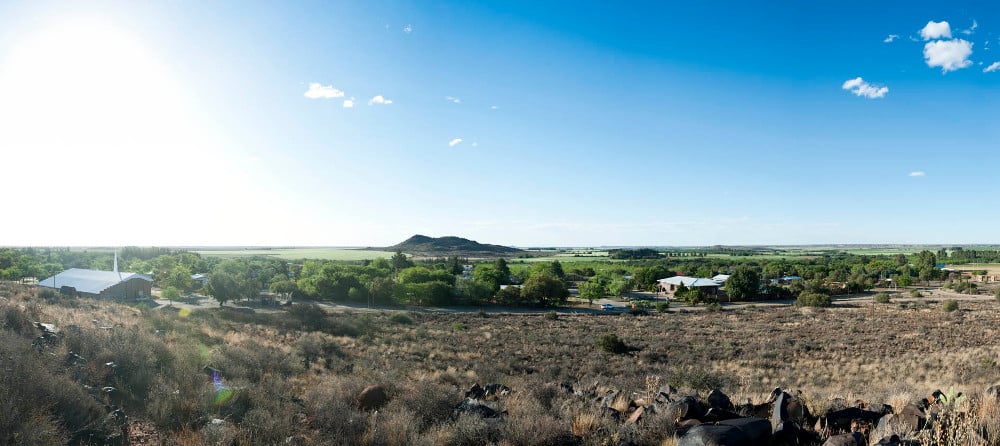
The view from Monument Hill.
“It was never protected. When a businessman eventually bought the site, I was the one liaising with different Afrikaner organisations to take it. They all said ‘yes’ but the thing was it was going to happen at their own cost. The businessman said he couldn’t wait any longer. So we [the FF+] organised the money to move it.”
The monument was hoisted by crane on to a 10-wheel flatbed truck and driven to Orania in June 2002. Biehl remembers the journey took him and the contractor 12 hours.
“We loaded it on to the truck in the afternoon, so we drove the whole night through.”
‘A little chipped’
Speaking to the M&G from his small office in Orania’s administrative block, Biehl said the monument was unveiled in December 2002.
“The biggest cylinder was a little chipped, but that was it.”
The journey from Johannesburg to Orania takes about seven hours by car, through Klerksdorp, Kimberley, Hopetown and then on to Orania on the banks of the Orange River.
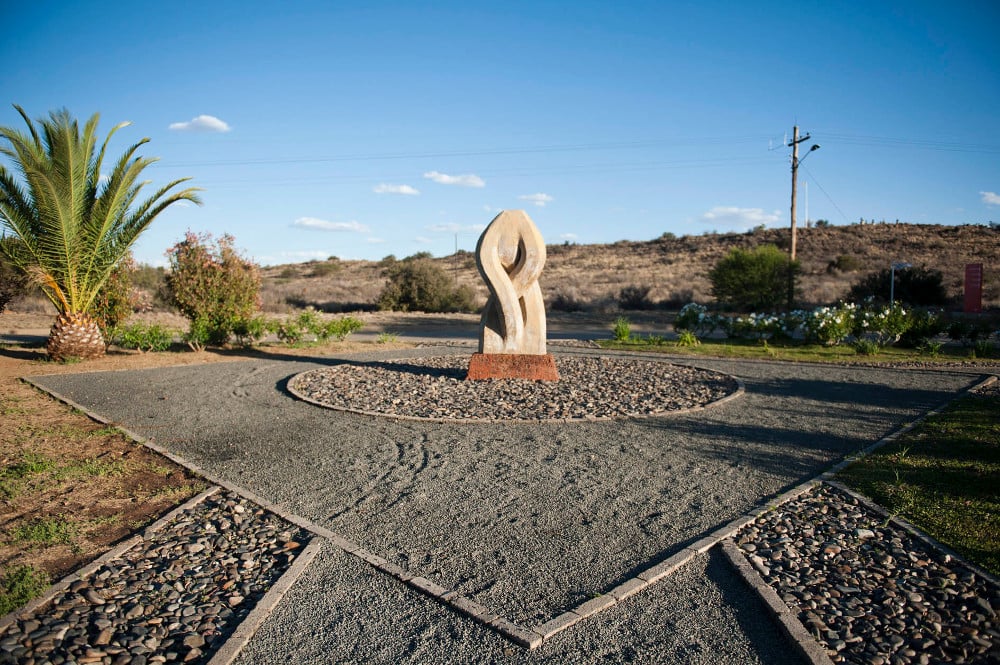
A monument to the plaited, syrupy koeksister stands in the residential area of Grootdorp.
The area is semiarid, and around the town is a thriving pecan nut plantation, one of the country’s largest. There are sheep and cattle and fields of wheat and lucerne, the green a contrast with the dry Northern Cape shrubland. In the town, which has about 1 100 inhabitants, a shopping centre and new houses are being built.
The Irish Volunteer Monument now sits on top of Monument Hill on the edge of town. It is a rocky, flat hilltop with views of the suburb of Grootdorp below – a community hall, swimming pool and the fibreglass Koeksister Monument, which was erected in honour of the syrupy plaited dough confectionary.
The Irish monument, without its sunken concrete berm in Brixton, blends in with the scrubland.
Cultural life
Town architect Christiaan van Zyl accompanied the M&G up Monument Hill. “Some people are upset that the monument was moved here but it’s better here than in a landfill.”
The hill is used regularly in Orania’s cultural life, and some gather on the hill on Heroes’ Day (October 10, Paul Kruger’s birthday).
“There have also been gatherings on Bittereinder Dag [May 31] to mark the end of the Anglo-Boer War, but for that we usually go to the concentration camp site in Hopetown. It’s not a set thing that we go to Monument Hill every year.”
Van Zyl says he is trying to organise a celebration for St Patrick’s Day at the Irish Volunteer Monument on March 17 next year.
‘Seven heads of state’
Van Zyl shows us the “seven heads of state”, a semicircle of the busts of Afrikaner leaders, mounted on concrete plinths about 100m away from the monument.
The busts of Paul Kruger, Barry Hertzog, Hendrik Verwoerd, Daniel Malan, Hans Strijdom and John Vorster came from all over South Africa and are of different sizes and quality. The seventh plinth is empty. It is reserved for Marthinus Steyn, the last president of the Orange Free State. A bust of him is still being sought, says the bespectacled Van Zyl.
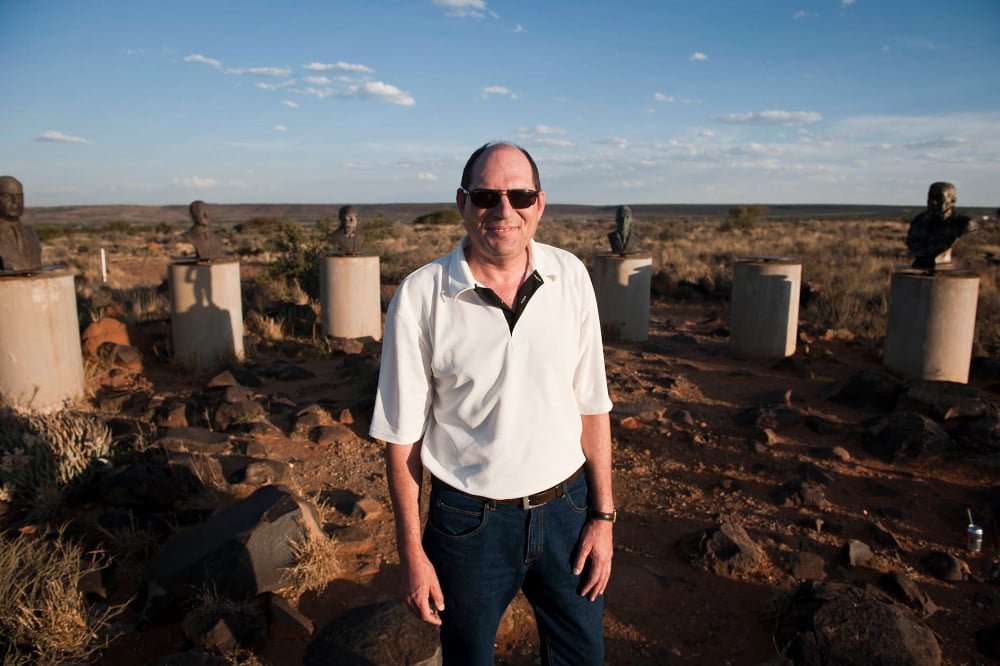
Town architect Christiaan van Zyl stands among the busts of Afrikaner leaders.
The fibreglass bust of Kruger, given to Orania by the Solidarity trade union, is chipped and its gold paint is peeling.
The busts of Malan, Hertzog and Strijdom were sourced by Boshoff, from the Erfenisstigting [Heritage Foundation] at the Voortrekker Monument. The cultural organisation had, in turn, sourced the statue from the provincial legislature in Bloemfontein.
The John Vorster bust, the latest arrival, was acquired from the John Vorster Technical High School in Pretoria, and the Verwoerd bust came from the family’s collection. Boshoff married Verwoerd’s daughter, Anna, in 1954.
‘Prominent figures’
“These are not the only busts we’re going to put here. There’s also space for other circles. So, if we get busts of other people, like writers and so on, we’ll also place them. We want this to be a place, in 23 years, where all the prominent figures in our country are preserved, representing the Afrikaner culture,” says Van Zyl.
The busts all point to a bronze sculpture of Orania’s mascot, Kleinreus (Small Giant), a small boy who is rolling up his sleeves as if in preparation for work. This spot had originally been occupied by a bust of Verwoerd, which has now been moved into the middle of the semicircle.
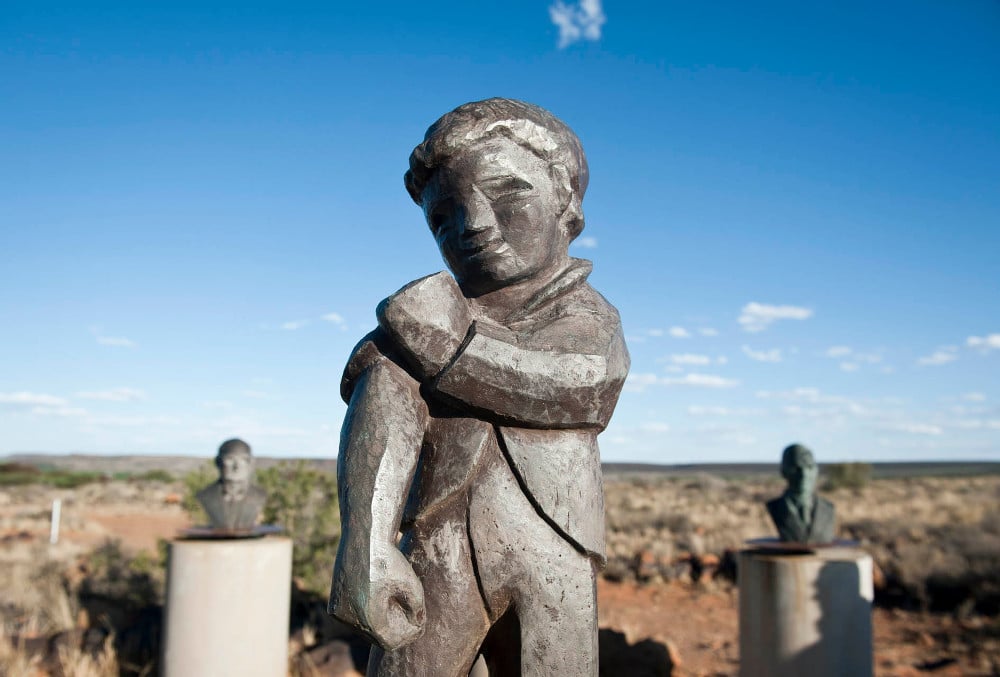
Kleinreus, ‘the third Afrikaner’.
“Dr Verwoerd is in the middle because it was his vision to have the water scheme and a heartland for the Afrikaner,” says Van Zyl. “So he is still prominent, but there are others as well.”
Kleinreus – whose likeness appears on signs around Orania and on a newsletter – is a physical representation of what Oranians call “the third Afrikaner”. According to Orania resident and businessman Quinton Diedrichs: “The third Afrikaner is a new generation Afrikaner who understands the principle behind self-labour. They are not hung up anymore in the old South Africa but want to establish a new future for the Afrikaner, one built on self-governance and own territory in peace with its neighbours.”
In conversations with Orania residents, some say that Verwoerd was a misunderstood figure. Some still speak of “separate development”.
Verwoerd museum
There is also a Verwoerd museum in Betsie Verwoerd’s home, in which filming and taking photographs are prohibited.
There are at least five busts of Verwoerd in the museum. They are sourced from places such as the HF Verwoerd Hospital in Pretoria (now the Steve Biko Academic Hospital), the HF Verwoerd (now Gariep) Dam and the Port Elizabeth International Airport (formerly HF Verwoerd airport).
On display is the suit Verwoerd wore on the day of his assassination by Dimitri Tsafendas in Parliament on September 6 1966, the shirt he wore when he survived an assassination attempt in 1960, a drawer of honeymoon pictures and the Vierkleur flag that draped his coffin.
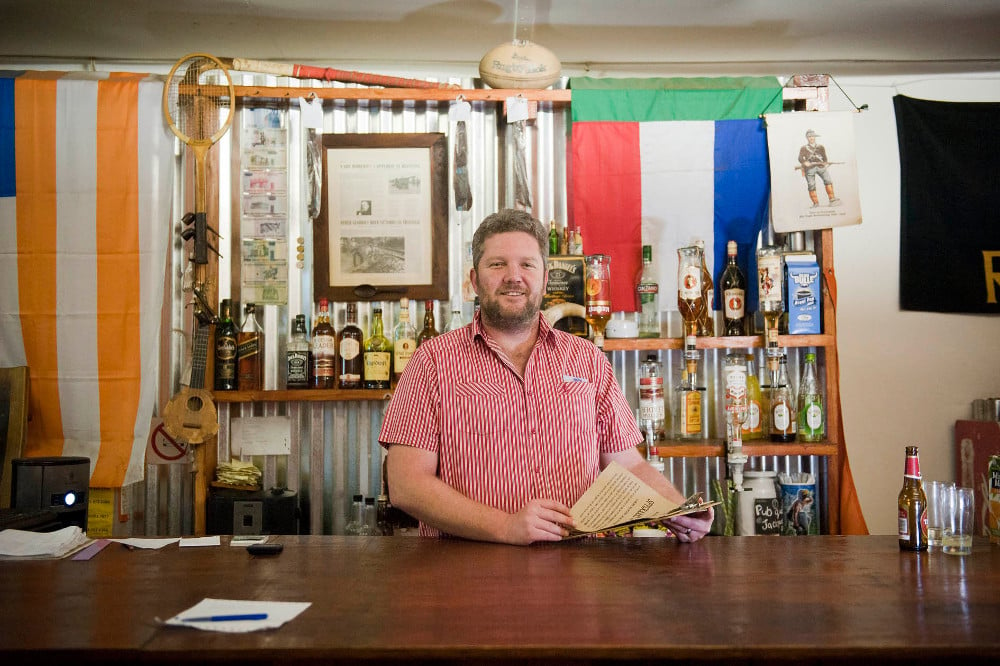
Orania resident and businessman Quinton Diedrichs.
The M&G met Boshoff at the Afsaal, a restaurant and pub in the town’s main business district. Boer Republic flags and colour reproductions of Boer generals are on the walls.
To the question of whether Monument Hill is a shrine to apartheid, he replies: “We would never erect a monument for apartheid. But in another sense there are a lot of apartheid figures on that monument, and it looks like there’s a lot of them together.
“Those are Afrikaner leaders of the 20th century. They have modernised South Africa and they have modernised Afrikaners. There is much that they did about which we are proud and which we own for ourselves. They were also the guys who implemented apartheid, which was obviously not that great, but which was part of an integrated system, an integrated conglomeration of powers that formed South Africa.
“You can disown your past, but then you disown most of it, if not everything. You can take responsibility for it, in a certain sense. You can critically engage it and come to some insight regarding it.”
Unkempt tower
Back in Brixton, a resident says the lookout point below the tower, now called the Sentech Tower, is unkempt and squatters have moved in.
Resident Marie Huchzermeyer says she was not attached to the Irish monument, and that it had been a “curiosity”.
“People stop there and go up to see the views. In that way, it’s such a wasted space. It’s the public side of Brixton, with the Sentech Tower, the Hindu Crematorium – a side of Brixton that tourists can come to. We are concerned that that gets restored and we haven’t got the City of Jo’burg to think more strategically about that spot.”
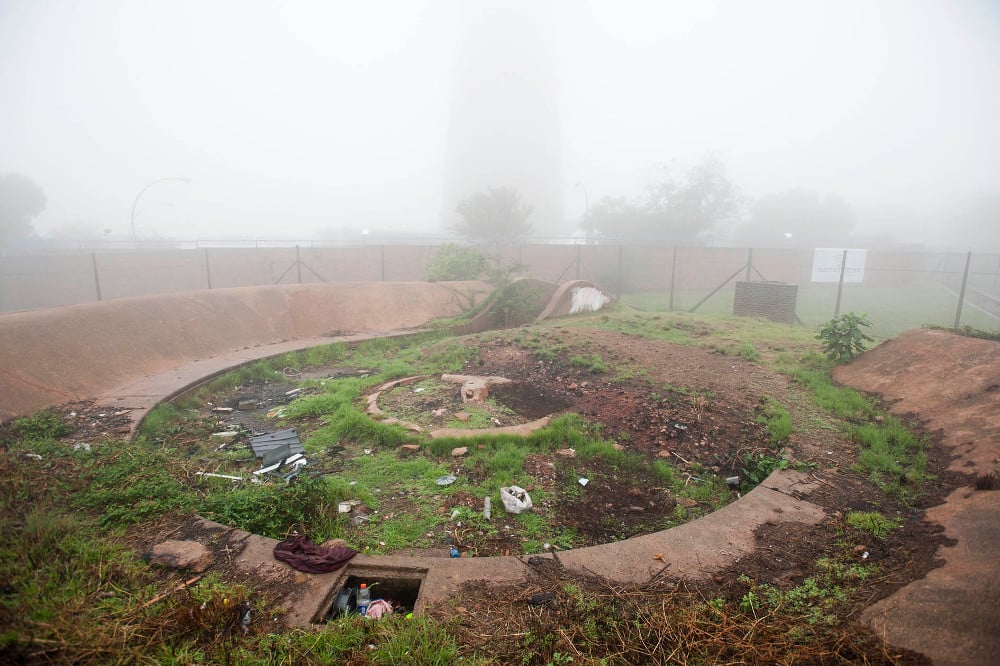
The original site of the Irish monument in Brixton, Johannesburg.
Eric Itzkin, the deputy director for immovable heritage in the city’s arts, culture and heritage directorate, said finding a way to commemorate the Irish and the Boer struggle was “worthy”, “but I have scepticism about bringing it back from Orania”.
“Aesthetically, it doesn’t have great merit and what was carted away does not seem to hold that much value. There is positivity in how the Brixton residents are approaching it – that it holds value for all. If they were proposing a new monument, perhaps in a new site, maybe that would be more beneficial.”
‘Ridiculous’ move
Tour guide Biehl says moving the Irish monument back to Brixton would be “ridiculous”.
“It would be cheaper to keep it here. It has become a treasured beacon and we wouldn’t like it to be removed.”
“There are people who say the Union Buildings would have made the perfect apartheid museum,” says resident Sifiso Ntuli, who calls himself a “cultural activist” and runs heritage tours around Brixton and the wider city.
“But guess what, the revolutionaries took it over and [Nelson] Mandela went and slept on Verwoerd’s bed, so to speak. He went and sat at the same work desk that Verwoerd worked from. So has the current president. The ANC, perhaps without our own concepts of power, we went and walked right into that. So, now, is the monument in Brixton not ours?”
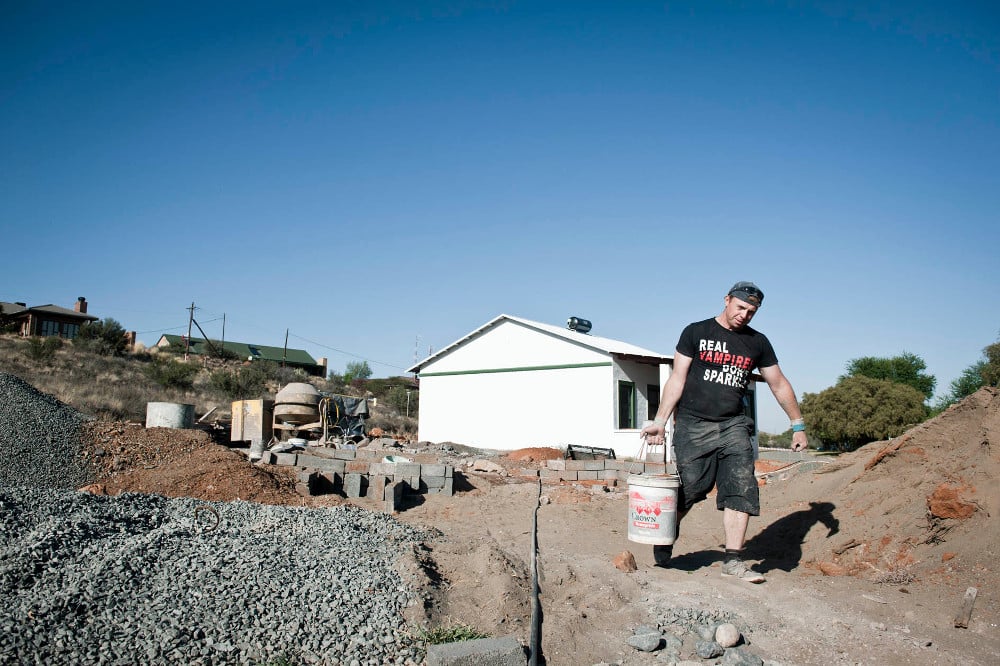
The town of Orania is expanding: its population is growing and new housing and complexes are being built.
Mark Shaerer, the chairperson of the Brixton community forum, says the Irish monument should never have been removed. “It’s almost a reminder not to go back to that type of thought. This monument might not reflect the current political ideology, but Sifiso is right, we can’t completely reject old thoughts and ideologies.
“For me the removal of it is significant in how people try to take things away, into an enclave, like, ‘It’s ours. You can take Brixton but you can’t take away our memorial’. It’s left a hole where it once was. Perhaps the significance of it is the hole, which shows that other people stayed, others fled, others took things with them to Orania. It’s really about the way people tackle change in the city.”